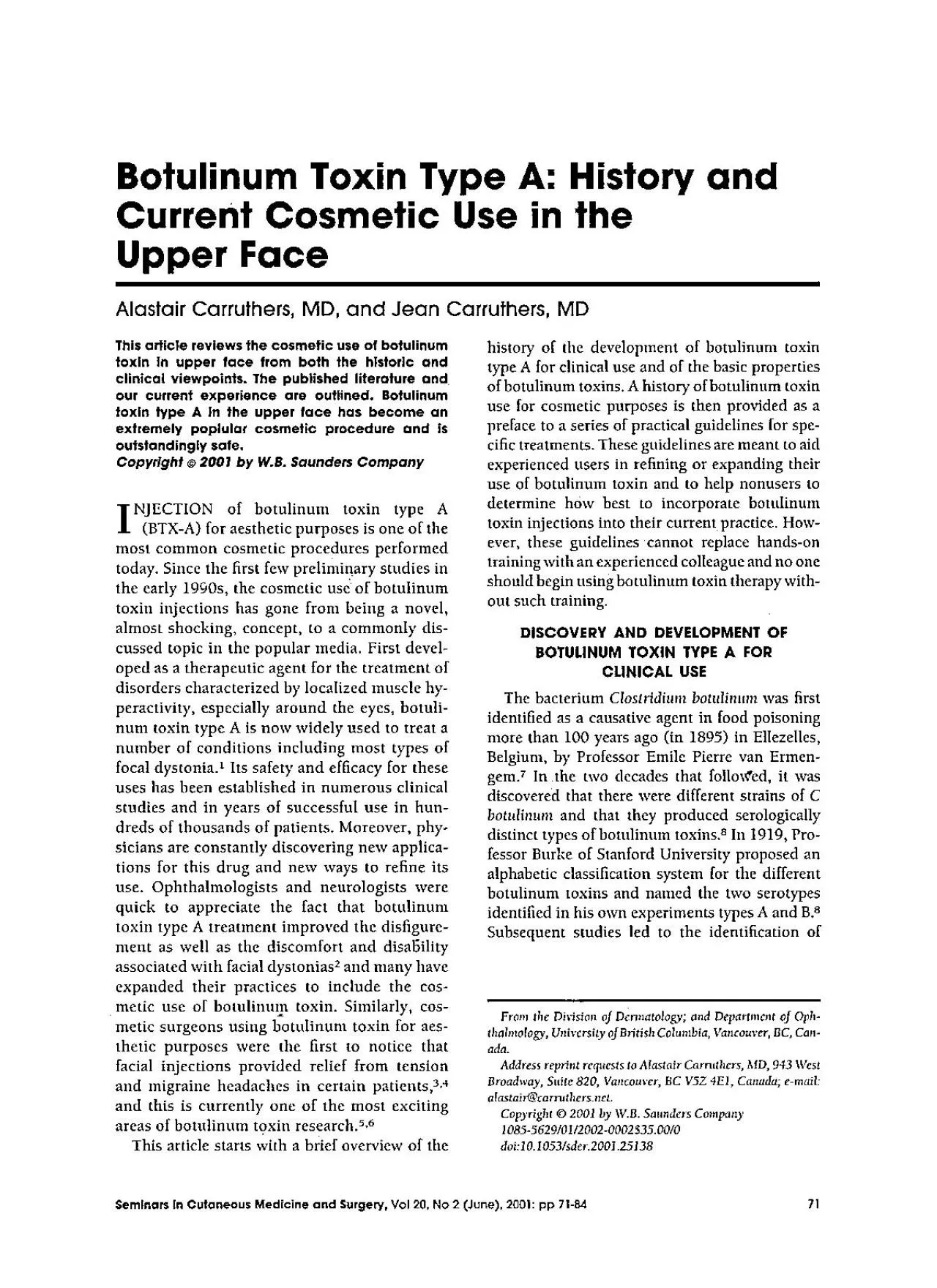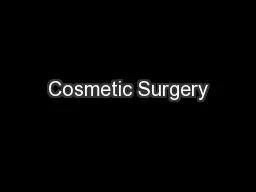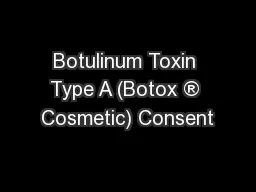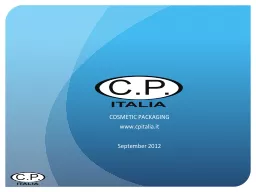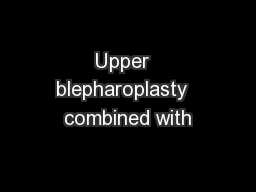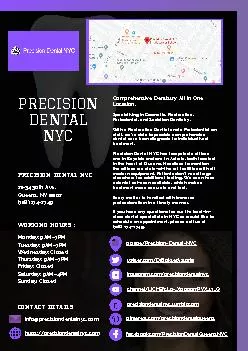PDF-Toxin Type A History and Current Cosmetic Use in the Upper Face
Author : valerie | Published Date : 2022-08-19
Carruthers MD and Jean Carruthers MD Thls article reviews the cosmetic use of botulinum toxin in upper face from both the historic and clinical viewpoints The published
Presentation Embed Code
Download Presentation
Download Presentation The PPT/PDF document "Toxin Type A History and Current Cosmeti..." is the property of its rightful owner. Permission is granted to download and print the materials on this website for personal, non-commercial use only, and to display it on your personal computer provided you do not modify the materials and that you retain all copyright notices contained in the materials. By downloading content from our website, you accept the terms of this agreement.
Toxin Type A History and Current Cosmetic Use in the Upper Face: Transcript
Download Rules Of Document
"Toxin Type A History and Current Cosmetic Use in the Upper Face"The content belongs to its owner. You may download and print it for personal use, without modification, and keep all copyright notices. By downloading, you agree to these terms.
Related Documents

